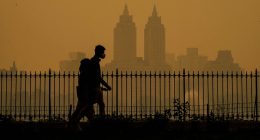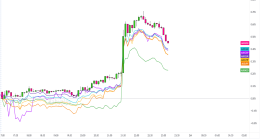Gerald Brevard III was arrested Tuesday on charges of attacking at least five homeless people, two of whom died, in Washington, D.C., and New York City. One of the first things the mayors of both cities said during the attacks was that the homeless should seek shelter. And that was one of the worst pieces of advice for people who intentionally stay out of the shelter system because of its dangers.
When I slept in shelters, I was often sleeping in cots next to ex-cons with any number of offenses; according to a 2017 Department of Housing and Urban Development report, more than 50,000 people move directly from prison into a shelter every year. If more people knew that homeless people chose to sleep outside because shelters were unsafe, then the homeless population may be less demonized. Millions of the itinerant have to pick their poison: face the dangers of being on the street, or face the dangers of shelters. I’ve done both.
Millions of the itinerant have to pick their poison: face the dangers of being on the street, or face the dangers of shelters. I’ve done both.
Entering the shelter system was crushing. Originally from Chicago, I thought I’d seen it all, but New York City taught me a lesson I’ll never forget. Though I would eventually find sustainable housing, I was shuffled between five shelters before that. I remember staying in a room with 12 men inside of it. The small, lumpy cots were standard twin-sized beds. It was always musty — the scent of new vomit and Olde English. Mice often scurried across the chests and faces of sleeping men like cross-country runners. Food was sometimes a parade ground for roaches. And if that wasn’t enough, men were getting stabbed and raped in showers.
The prison-to-shelter system adds another dimension to recidivism: People get out of prison, then can’t get hired by companies because of their records, so they have to go to the shelter, then they get arrested on trumped-up charges such as loitering, go back into the prison, then get out and do it all over again. I spent many sleepless nights next to killers and rapists. According to the Prison Policy Initiative, people incarcerated more than once are 13 times more likely to end up in the shelter than the general public. This isn’t to demonize ex-convicts; it’s just to show how often the system fails at even calling itself fair.
Living on the street in a place like New York City is far from safe. I remember many of my days were spent on subway trains and many nights on subway platforms absent of heat, my sleep frequently interrupted by NYPD cops who have been accused of harassing the homeless.
People aren’t keen to mention their homelessness. Because of society’s feelings about the issue, and despite widespread myths, many people on the streets are not visible. In fact, you often won’t know a person is homeless, even if you have a close relationship with them.
Throughout the U.S., those who are more visible are often the victims of police sweeps, torture devices like anti-homeless architecture and hostile sound design like blaring “Baby Shark” to deter the itinerant.
So, what’s worse, the homeless shelter or sleeping outside? This is a daily conflict millions in the community have to fight with themselves about.
The preliminary 2021 budget for New York City’s Department of Homeless Services was $2 billion. That money is used to fund 10 main DHS programs divided into four sections: adult shelters, family shelters, street homelessness and “other program areas,” which includes rental assistance. The ultimate goal of the department is to prevent homlessness. It’s a noble objective, and $2 billion, while only 2 percent of the city’s fiscal budget, isn’t insignificant. But the safety of shelters is still a problem.
According to Brevard’s family, he suffers from mental illness and was once homeless. He also has a criminal history that includes charges of assault, attempted robbery with a deadly weapon, burglary, fraud and identity theft. While it’s not clear if he was once housed in a shelter, imagine sleeping next to someone like this in a confined space?
Across the country, and even in upstate New York, they’ve found ingenious ways to deal with their homeless with a “housing first” approach, including building cost-effective tiny house villages.
If it were up to me, I’d love to see all housing just become more affordable. Millions of people in the U.S. are one paycheck away from poverty. With the high cost of living, many could find themselves at risk of becoming homeless. That’s why, as controversial as it may seem, guaranteed income is a crucial step to helping many low-income people avoid housing insecurity. And companies looking to hire people should have an outreach program, job fairs and seminars just for the homeless. Too often, people equate being homeless with laziness. That wasn’t the case for me, and it’s not the case for many others.
These are the sort of innovative solutions we need to implement to address this crisis. However, tiny houses may be as good as we can ask for right now.
Meaningful solutions can only happen when we place a priority on marginalized Americans. In a nation as wealthy as ours, caring is our greatest resource, yet is always put on the back burner. We know the problems. We have solutions. What we need is the will to fix it.
Source: | This article originally belongs to Nbcnews.com










